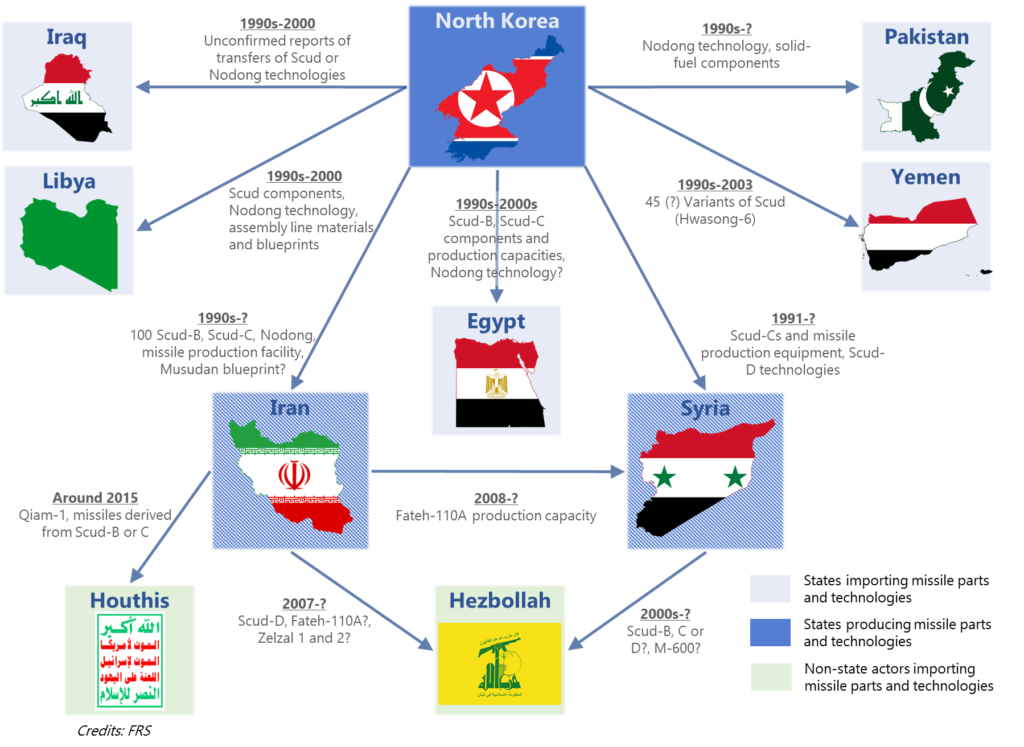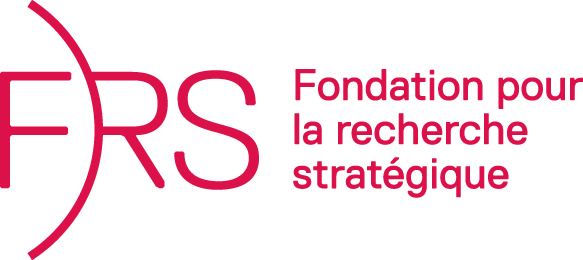
The main objective of the Hague Code of Conduct against ballistic missile proliferation (HCoC) is to limit the spread of these highly destabilising weapon systems, which remain to this day preferred vehicles for carrying weapons of mass destruction (WMDs). Since the inception of the Code in 2002, ballistic missile proliferation has evolved in many ways. While proliferation cases have diminished quantitatively, transfers continue to take place through different channels, and an increasing number of countries have developed domestic missile production capacities
The main drivers of ballistic proliferation
Recent ballistic missile strikes in the Middle East have shown that these weapons remain attractive for numerous state and non-state actors. These actors seek to develop missile capabilities by building domestic production capacities and/or by resorting to external suppliers. Whether they are coupled with WMDs or not, ballistic missiles can be seen as powerful weapons which carry a degree of prestige. Even for rudimentary systems, such as old Scud derivatives, they can have a deterring effect due to the damage they can inflict if they hit highly populated areas, and due to the psychological effect of such strikes. They remain hard to detect and destroy prior to launch and, as it has been demonstrated by recent operational uses, difficult to intercept even for states which have heavily invested in missile defence. Ballistic missiles are also in many cases easier to field and to operate than an air force.
In brief
Around 30 states hold ballistic missiles today. All current nuclear-weapon possessor states have acquired missile production capacities to enhance their nuclear deterrence.
Ballistic missile transfers are currently strictly restricted by the Missile Technology Control Regime (MTCR). Under the regime, the main missile provider is the United States, which has sold in particular the short-range MGM-140 Army Tactical Missile System (ATacMS) to some of its partners.
Proliferation concerns remain, especially in the Middle East and towards non-state actors.
To circumvent scrutiny or export control mechanisms, an increasing number of states have become missile producers, which poses new challenges in the fight against missile proliferation.
Authors: Lauriane Héau and Emmanuelle Maitre
Main characteristics of ballistic missiles
Considering their status as delivery vehicles of choice for WMDs, ballistic missiles have been associated with proliferation risks. As a consequence, the international community has sought to halt their dissemination, notably through the adoption of the HCoC; but also through United Nations Security Council (UNSC) resolutions prohibiting their transfer to certain actors.
When coupled with WMDs, ballistic missiles can be destabilising for several reasons. Firstly, such missiles have very short flight times, especially in small theatres. This makes countering them extremely difficult and shortens decision-making time in the event of a strike. Secondly, missiles could be used at an early stage – for fear that they would later be destroyed by the adversary –, thus lead to conflict escalation (use-it-or-lose-it dilemma). Thirdly, their development, deployment or use can lead to escalatory chain reactions, and this destabilising potential is accentuated by the dual capability of most systems, which may carry conventional or WMD warheads.

An increasing number of missile producers
Missile transfers were substantial towards the end of the Cold War, and immediately after the collapse of the Soviet Union, when many systems found their way into the hands of states working on the acquisition of WMDs and their means of delivery. Since 2000, transfers have been largely curbed, due in part to better implementation of export control regulations, a political willingness shared by a majority of states to halt such transfers, the launch of counter-proliferation initiatives, and the disruption of most WMD clandestine programmes. In this context, the number of countries prepared to provide missile technologies has dwindled, and the conditions for exports have become increasingly restrictive. Yet, these restrictions have led some states to favour the development of domestic production capacities, and to substantially increase the quality of developed technologies. This has created new proliferation risks. Notably, North Korea has established itself as a comprehensive missile producer by developing both liquid and solid-fuel systems, and short, medium and long-range missiles; while increasing their accuracy and reliability. Thanks to North Korean support and initial guidance, Iran is now able to produce its own systems. Production lines have also reportedly been developed in Syria and Yemen. The indigenisation of production capacities demonstrates the effectiveness of existing international mechanisms to prevent transfers of missile parts and technologies. But it also constitutes a challenge as they make such mechanisms basically irrelevant vis-à-vis the concerned countries.
The import of weapon systems within the framework of export control mechanisms
Export control mechanisms to regulate the transfer of ballistic missile technology have been developed through the MTCR.1 In this context, some missile transfers continue to take place and contribute to augmenting the list of new ballistic missile possessors. The United States is the main provider of heavy-guided rockets – which can be assimilated to tactical ballistic systems – within this framework. In particular, it has been selling conventional ballistic weapons to a number of its allies worldwide. For example, Turkey procured the short-range ATacMS in 1996, followed by Greece (1997), South Korea (2002), the United Arab Emirates (2010) and Bahrain (2019). Poland and Romania have also placed orders to acquire the system.2 This surface-to-surface missile has a range of up to 280 km and has notably been used in combat during the first and second Iraqi wars. Russia has also developed ballistic systems that can be exported, especially the Iskander-E, a version of the surface-to-surface missile with an MTCR-compliant range (below 300 km). Armenia procured the Iskander-E in 2016 and Algeria became the second international buyer in 2017.3 Finally, there are conflicting accounts on whether Saudi Arabia has purchased DF-21 from China in 2007. If verified, this sale would constitute an MTCR violation, as China has committed itself to uphold its guidelines.4
Proliferation networks of concern
While the number of ballistic missile transfers has decreased in comparison to the 1990s, active proliferation networks remain a matter of concern. As long-distance transfers have become increasingly difficult given the risk of detection and interception by maritime patrols, immaterial technology transfers are becoming a new challenge, fostered by the emergence of additive manufacturing.5 Regional networks such as the Iran-Syria axis are also very active. Decades after the first sales of materials and technologies from Pyongyang to Tehran, missile technology transfers from Iran have reportedly enabled Syria to produce its own version of the Fateh-110A since 2008. Moreover, non-state actors are increasingly becoming recipients – and end-users – of ballistic missile components or technologies, the transfer of which is prohibited under UNSC Resolution 1540. This may be the case for Hezbollah, which has reportedly received different weapon systems (Scud B, C or D, Fateh-100A or Zelzal) from Syria as well as from Iran.6 It is also the case for the Houthis, which, after firing legacy weapons stockpiled by Yemen since the 1990s, have been striking Saudi Arabia with Burkan 1 and 2 systems. These weapons appear to be of Iranian origin and derived from the Qiam-1.7

About the Hague Code of Conduct
Adopted in 2002, the Hague Code of Conduct against Ballistic Missile Proliferation (HCoC) is a politically>binding instrument aiming to limit the proliferation of weapons of mass destruction (WMDs) delivery vehicles.Composed of a set of transparency and confidence-building measures, the HCoC is the only existing multilateral instrument to focus on WMD delivery vehicles. Signed by 93 states at its inception, the HCoC hasnow reached 143 subscribing states (as of December 2020).
When subscribing to the HCoC, states commit to abide by a set of UN treaties and international conventions on space security; to submit an annual declaration regarding ballistic missile capabilities and national policy on non-proliferation and disarmament treaties and instruments; and to send pre-launch notifications prior to any missile or space launch. Documents are uploaded onto a dedicated online platform (available for subscribing states only) managed by Austria, which acts as the HCoC Immediate Central Contact. Subscription to the HCoC is free of charge.
While subscribing states are asked to exercise ‘maximum restraint’ in the development of ballistic capabilities, it should be stressed that they are not proscribed from possessing ballistic missiles nor from pursuing space launch activities. Subscribing to the HCoC also enables states to gain access to information shared by other subscribing states, and to demonstrate their political commitment to non-proliferation and disarmament.
1 Kolja Brockmann, ‘Controlling ballistic missile proliferation: Assessing complementarity between the HCoC, MTCR and UNSCR 1540,’ HCoC Research Paper No. 7, Foundation for Strategic Research (FRS), June 2020.
2 Missile Defense Project, ‘MGM-140 Army Tactical Missile System (ATACMS),’ Missile Threat, Center for Strategic and International Studies (CSIS), 30 November 2016, last modified 15 June 2018, <https://missilethreat.csis.org/missile/atacms/>.
3 Missile Defense Project, ‘SS-26 Iskander,’ Missile Threat, CSIS, 27 September 2016, last modified 19 December 2019 <https://missilethreat.csis.org/missile/ss-26-2/>.
4 Tong Zhao, ‘Did China Export DF-21 Missiles to Saudi Arabia?,’ Carnegie-Tsinghua Center for Global Policy, November 2014.
5 Arnaud Idiart, ‘The role of intangible transfer of technology in the area of ballistic missiles – reinforcing the Hague Code of Conduct and the MTCR,’ HCoC Research Paper No. 2, FRS, February 2018.
6 Shaan Shaikh, ‘Missiles and Rockets of Hezbollah,’ Missile Threat, CSIS, 26 June 2018, last modified 27 September 2019 <https://missilethreat.csis.org/country/hezbollahs-rocket-arsenal/>.
7 Jean Masson, ‘Les missiles des Houthis : prolifération balistique et groupes armés non-étatiques,’ Recherches & Documents, FRS, December 2018.




